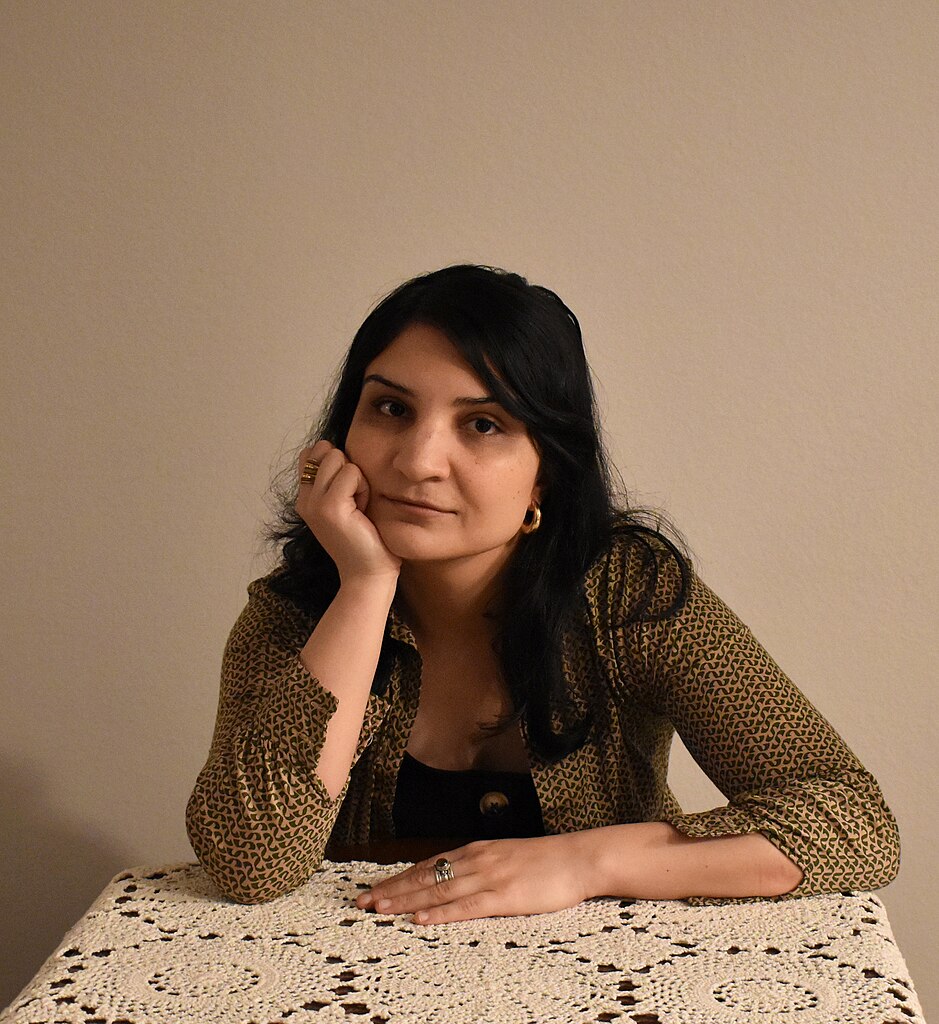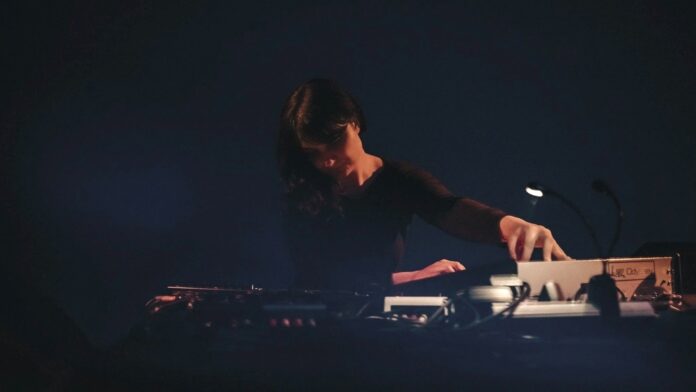Sarah Davachi’s music doesn’t sound composed or played so much as it’s been drifting around for eons in one form or another before finally being bottled in song. Though the Canadian, LA-based composer released her first album in 2015, her music feels alien to the iPhone era—but good luck finding an analogue to her mysterious and magisterial drone music in the Renaissance. She calls it “late music,” informed by the harmonic principles of early music (she most often performs on organ and other keyboards) but undoubtedly of the minimalist tradition for which her alma mater, Mills College in Oakland, has long served as an incubator.
It’s austere stuff, and there’s a lot of it: She’s put out at least an album a year since her debut, many of which stretch well past 90 minutes in length. Yet even by her own standards, some of her recent projects have felt especially monumental. This year’s The Head as Form’d in the Crier’s Choir splits its 92 minutes between just seven tracks. Meanwhile, Music for a Bellowing Room, her new collaboration with SF and LA-based filmmaker Dicky Bahto, requires the viewer to enter an unbroken reverie for three hours.
Davachi will perform her score to Music for a Bellowing Room live at the Lab in the Mission on Sat/16. We caught up with the composer to discuss her Bay Area connections, her increasingly durational work, and her return to the Lab, where she performed in 2018 (some of her set can be heard on live album Figures in Open Air).
48 HILLS Tell me about the musical climate at Mills when you attended.
SARAH DAVACHI I did my master’s at Mills from 2010 to 2012. I feel like the Bay has changed a lot since then. I moved there from a small city in Canada, and I remember being really blown away by all the cultural things that were going on, all of the stuff that you could do. Within the first couple weeks when I moved there, I lived really close to the old Berkeley Art Museum, and I remember a concert announcement that Terry Riley was playing there. I thought it must be a different Terry Riley or something. I always feel like Mills is like six degrees of separation in the Bay Area. Everybody has some connection somehow to Mills, or someone who went to Mills. It was a really nice, musically luxurious place to live.
48 HILLS You’ve described Music for a Bellowing Room as durational—how does the length of the piece figure into the viewer/listener’s experience of it?
SARAH DAVACHI It’s a three-hour piece that was commissioned by the Museum of Modern Art in New York last fall. I premiered the piece as part of a concert series I did there. They wanted to do something that felt more like an installation but without it being an installation, like still being sort of a performance. I also decided at the time to ask my friend and frequent collaborator Dicky Bahto, who’s a photographer and filmmaker, to make a three-hour film and he was into it also.
It’s difficult to explain because it really is meant to be a three-hour performance. It’s really not an installation in the sense that you can come and go and get just a sense of what’s going on. It’s meant to be a continuous thing, it just happens to be quite long. Most of my performances are around an hour or something like that. When I do those kinds of performances, they tend to move very slowly, but I’m always having to be aware of what I have to do next. I have in some of my scores a very detailed time list—this has to happen at this time, and this happens for this long, this goes to this. It feels different for me because I’m always having to check where I’m at, whereas the listener probably hears it move a lot more slowly. When I first did it at the MoMA, it definitely didn’t feel like three hours. It went by much faster for me.

48 HILLS What can audiences do to prepare for the performance?
SARAH DAVACHI Obviously we’re not gonna lock the doors or anything. If you can’t stay for three hours, if you’re finding it too intense, you’re free to leave. But I would say just try to open yourself up to staying for three hours and engaging in it. It’s not much longer than watching a movie in some cases. What’s interesting about working this way is I understand that a lot of the time when people perform live, people want to look at something and they want to see what the person’s doing and they want to have that connection of seeing somebody perform. But the nature of my music is very slow moving, very subtle changes, there isn’t a lot of overt performance in that sense. So I really try to remove the desire to look at me and focus on the sound.
In this case, because there’s the film component, I think that makes it a little bit easier to focus on the film as opposed to watching me push buttons and move levers and things like that every few minutes. I don’t think that’s interesting to watch. I would encourage people to take advantage of the fact that there’s a visual component going on during the music. You can engage in the music in a really different way. The film aspect often brings up things in the music that I didn’t hear that I wouldn’t have noticed without the film, and I think vice versa too. The music can really bring out detail in the film that you wouldn’t notice.
48 HILLS Is it challenging as an indie artist to release long-form work?
SARAH DAVACHI I do it because that’s the kind of music that I want to make. I think that overrides any challenges, but there’s definitely physical difficulties. I started pushing the lengths of records. Early on when I first started releasing records, I had a record with a side that was just over 20 minutes. I can’t remember which record it was, but I remember the label telling me I had to cut off two minutes, so I had to edit a couple of the pieces to be a minute shorter or something, and I remember being really bummed. The pieces are compromised in some sense because I wasn’t actually planning for them to be this much shorter, and a minute is a long time in recorded music to remove.
I know there are people that do like 25 minutes [on a side], and it gets tricky because then you are compromising the sound. But I think just over the years I’ve figured out a good method that seems to work for me. My partner masters all of my music, he’s a mastering engineer. That helps because he knows what my music sounds like, knowing it’s longer than maybe what’s ideal, he can take that into account. I’m happy with CDs also. I don’t see it as an inferior format, especially because a lot of music I release can’t go on vinyl. It’s just too long. I also think a lot of the quieter music I do just lends itself better to CDs.
48 HILLS You’ve released music on your own label, Late Music, since 2020. Tell me about the advantages of having your own imprint.
SARAH DAVACHI It’s great. One of the benefits is being able to work things out and not have to feel like you’re starting from scratch with different people, because everybody has a different process that they use and different labels have different connections and it’ll always kind of feel like you’re starting from a different place. Having your own label working with the same people over and over again, you can really fine-tune that cycle and learn from what didn’t work, and what worked, and build into something that feels reliable, represents how you want to release your music.
It’s nice just to have a home, I guess, where I feel like I don’t have to worry about finding a label to release my music or finding people who I’m going to work well with or fitting into other labels’ timelines. I feel like I can remove that stress and just focus on making the music and putting it all together and then delivering it. Another thing is having my own influence as opposed to being part of another label’s aesthetic. I can create my own little world for it.
MUSIC FOR A BELLOWING ROOM Sat/16, 8pm at the Lab, SF. More info here.





